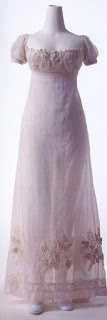To Cassandra, from Steventon, "My father has applied to Mr May for an alehouse for Robert, at his request, and to Mr Deane, of Winchester, likewise. This was my mother's idea, who thought he would be proud to oblige a relation of Edward in return for Edward's accepting his money. He sent a very civil answer indeed, but has no house vacant at present. May expects to have an empty one soon at Farnham, so perhaps Nanny may have the honour of drawing ale for the Bishop." - Saturday 1-Sunday 2 December 1798
The following, from Wikipedia, was an Act in place during Jane Austen's time concerning Ale-houses:
"The Ale Houses Act 1551 (5 & 6 Edw. 6 c. 25),
or An Act for Keepers of Ale-houses to be bound by Recognizance’s, sometimes
the Licensing Act 1551, was an Act of the Parliament of
England passed in 1552. It was passed to control the "abuses and
disorders as are had and used in common ale-houses", and laid the
foundation of modern licensing law. It provided that the Justices of the
Peace were given power within their jurisdiction to stop the common
selling of ale and beer in common ale-houses and tippling-houses, where they
felt it to be appropriate and convenient. No-one was to be permitted to keep an
ale-house without being so licensed by the Justices at Quarter Sessions,
and the Justices were to take bond and surety of the
keepers of common ale-houses and tippling-houses. This surety was to prevent
the playing of unlawful games as well as for the maintenance of public order.
Common selling of ale in booths at a fair by any person was
permitted, however, "for the relief of the King's subjects that shall
repair to the same", notwithstanding the rest of the Act.
It was repealed by section 35 of the Alehouse Act 1828 (9
Geo.4 c.61).
Tanner, J. R. Tudor Constitutional Documents, AD
1485-1603. Cambridge University
The notes in the back of Jane Austen's Letters offer that Mr. May and Mr. Deane were "Probably Thomas May, brewer, of Basingstoke, and Thomas Deane, brewer and brandy-merchant, of Winchester."
This would seem proof that Reverend George Austen was a respected man even in the surrounding villages of Steventon, that Mr. May and Mr. Deane would reply favorably to a request from him.
Nanny Hilliard was a maidservant at Steventon rectory. Her real name was Anne Knight Hilliard. She married John Hilliard in 1795. John might have been nicknamed "Robert" to "distinguish him from their other servant John Littleworth." Perhaps they were related to Edward through the Knights on Anne's side.
Anyway, the fact that Nanny might "have the honour of drawing ale for the Bishop" was a joke, as Farnham Castle was the an official residence of the Bishops of Winchester.
Here is some information about Farnham Castle, nine hundred years old!
http://www.farnhamcastle.com/history
Farnham Castle, amazing!
This is a picture of May's Brewery House in Basingstoke from the Hampshire Library and Information Service Hampshire County Council. This building was on Brook Street and demolished in 1966. What a great building. It was the family house of Mr. Thomas May to whom Reverend Austen had sent his request.
Here is the link to some information about it.
http://www.hantsphere.org.uk/ixbin/hixclient.exe?a=query&p=hants&f=generic_objectrecord.htm&_IXFIRST_=1&_IXMAXHITS_=1&%3Dcms_con_core_identifier=hs-hl-hs5575-i-00-000.jpg&t=hs-hl-lostbasingstoke&s=08RDvtk7TQR
I hope you enjoy your day today!
Terrie















































